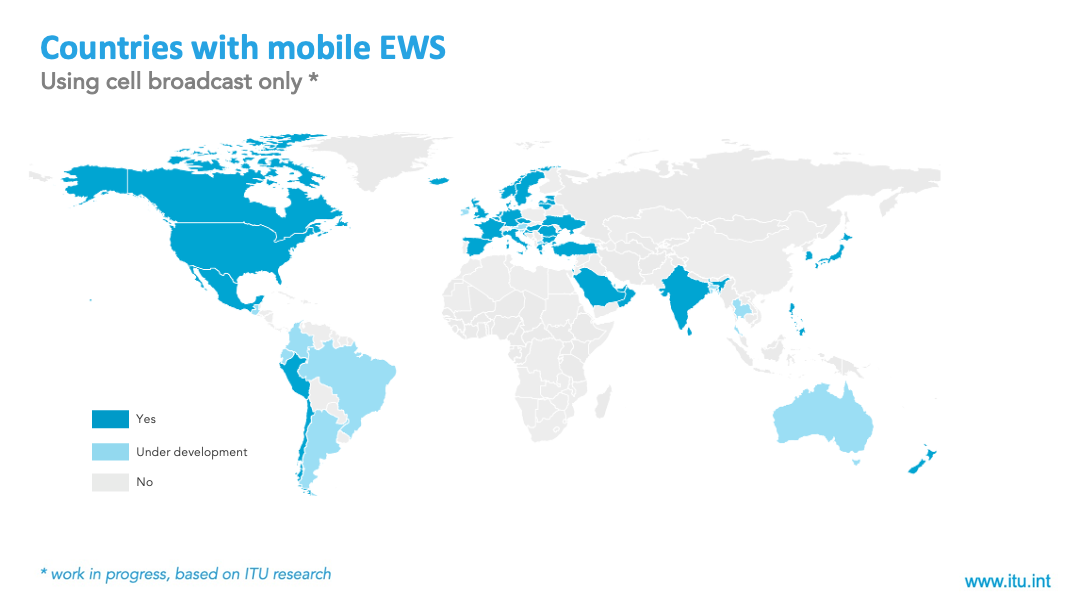Today's digital growth presents new opportunities to reach billions of people faster and more effectively, whether before, during or after disasters. According to ITU Facts and Figures 2025, today 99 per cent of the world's population is covered by a mobile network and 4 out of 5 people own a mobile phone. This makes mobile networks an incredibly powerful communication technology to alert populations about an imminent hazard.

The EW4All Executive Action Plan calls for the promotion and implementation of geo-located mobile-based early warning services using cell broadcast (CB) and/or location-based short message service (LB-SMS), a critical element for alert warning dissemination and communication.
What is cell broadcast and how does it work?
Cell broadcast is a method of simultaneously sending short messages to multiple mobile phone users within a defined geographic area. It can reach a very large number of devices at once.
A key advantage of the CB service is that users can receive messages without needing to subscribe or share personal information such as phone numbers or location data, the only requirement is that their phone is switched on and configured to accept cell broadcast messages.
In addition, the system is not affected by network congestion, allowing messages to be delivered instantaneously to hundreds of people, providing them with timely and relevant information and guidance. CB or LB-SMS are proven technologies already used in several countries, and their alerts are adaptable to specific requirements, such as a user's language.
The European Union sets a good example for national adaptation of CB alerts. A law adopted by the EU in 2018 requires all its Member States to set up systems to send alerts via mobile networks by 2022.
| 
ITU turns mobile networks into lifelines. |
This regulatory approach has proven an effective way to accelerate the
uptake of public warning systems across Europe. ITU encourages countries to consider a
regulatory approach to make the use of mobile networks mandatory for public warnings. With clear regulatory frameworks and financial support via multilateral development organizations, mobile networks can play a much larger role in helping societies adapt to the impacts of climate change, something that can be achieved at relatively low cost.

Disclaimer: The designations employed and the presentation of material on this map do not imply the expression of any opinion whatsoever on the part of ITU and of the Secretariat of ITU concerning the legal status of the country, territory, city or area or its authorities, or concerning the delimitation of its frontiers or boundaries.
Collaboration with GSMA and Mobile Network Operators
ITU works closely with the GSMA to strengthen cooperation with Mobile Network Operators (MNO), and to identify best practices for effective early warning systems. GSMA and MNOs have launched the call to action, the Industry Pledge, to deploy CB and LB-SMS, leveraging digital connectivity to ensure everyone is protected. As of August 2025, 16 MNOs have joined the pledge.
Technical Expert Group on Mobile Early Warning Systems (EW4All-TEG mobile)
ITU established a Technical Expert Group (TEG) for countries implementing and using mobile EWS (EW4All-TEG mobile). The online-based group will support ITU's lead of EW4All Pillar 3 by sharing experiences and building expertise in setting up and enhancing public EWS and last-mile communication, and improve resilience. Know more about
EW4All-TEG mobile and its Terms of Reference.